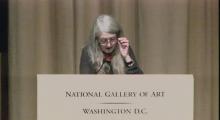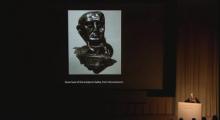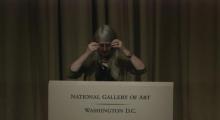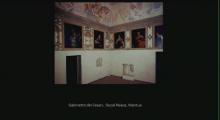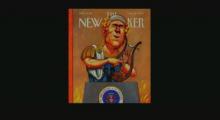-
themes
- Activism (33)
- Adversity (9)
- Being an Artist (284)
- Childhood (53)
- Collaboration (38)
- Color and Light (35)
- Communication (22)
- Community (124)
- Creativity (75)
- Culture (118)
- Death (25)
- Elements of Art (133)
- Food (38)
- Hope (3)
- Human Body (48)
- Identity (242)
- Imagination (29)
- Immigration & Migration (19)
- Individuality (20)
- Inspiration (268)
- Interpretation (66)
- Language (21)
- Learning (20)
- Learning to Look (201)
- Materials and Process (648)
- Memory (35)
- Morality (11)
- Nationalism (5)
- Nature and the Environment (115)
- Objects (276)
- Peace (4)
- Perception (155)
- Performance (163)
- Perspective (28)
- Place (197)
- Politics (97)
- Principles of Art (20)
- Religion and Spirituality (160)
- Ritual (43)
- Society (62)
- Sports and Games (19)
- Stories (118)
- Subjects (55)
- Symbols (24)
- Technology (88)
- Troika (1)
- Women and Art (76)
-
medium
- Architecture (122)
- Decorative Arts (306)
- Design (151)
- Drawing (130)
- Environmental & Land Art (10)
- Film (30)
- New Media (240)
- Painting (601)
- Paper Art (56)
- Performing Arts (190)
- Photography (200)
- Printmaking (81)
- Public Art (58)
- Sculpture (558)
- Textile & Fashion (54)
- Writing and Poetry (50)
-
period & style
- Abstract Art (34)
- Abstract Expressionism (38)
- Abstraction (16)
- Action Painting (2)
- Allegorical Painting (2)
- Ancient Art (48)
- Antiquities (7)
- Art Deco (2)
- Arts & Crafts (3)
- Ashcan School (3)
- Baroque (18)
- Bauhaus (1)
- Byzantine (1)
- Color Field (2)
- Conceptual Art (22)
- Contemporary Art (1446)
- Cubism (6)
- Dadaism (3)
- De Stijl Movement (2)
- Edo Period (14)
- Environmental Art (16)
- Etruscan Art (1)
- Expressionism (7)
- Feminist Art (23)
- Figurative Art (21)
- Fluxus Art Movement (5)
- Folk Art (12)
- Futurism (3)
- Gothic Art (2)
- Harlem Renaissance (6)
- Hittite Empire (1)
- Hudson River School (4)
- Impressionism (24)
- International Gothic (1)
- Internationalism (1)
- Landscape Painting (6)
- Medieval Art (13)
- Metaphysical Art (1)
- Mid-Century Modern (7)
- Minimalism (9)
- Modern Art (97)
- Modernism (15)
- Neo-Classicism (2)
- Neo-Impressionism (6)
- Neue Sachlichkeit (1)
- Performance Art (18)
- Plein-air Painting (2)
- Pointilism (3)
- Pop Art (20)
- Portraits (125)
- Post-Impressionism (13)
- Prehistory (1)
- Realism (4)
- Renaissance (30)
- Romanesque (1)
- Romantic Period (6)
- Sasanid Dynasty (1)
- Still Life (11)
- Street Art (43)
- Surrealism (16)
-
location
- Africa (80)
- Asia (279)
- Europe (542)
- North America (829)
- Oceania (5)
- South America (9)
-

-
people
- all (3396)
- artists (1890)
- recently featured:
- Warhol, Andy (8)
-
more
-
museum practice
- Art Handling (15)
- Collecting Art (37)
- Conservation (59)
- Conservation Science (36)
- Education (131)
- Exhibitions (204)
- Horticulture (1)
- Installation (64)
- Museum Collections (70)
-
video type
- Audio (9)
- Behind the Scenes (131)
- Commentary (127)
- Demonstration (114)
- Documentary (97)
- Exhibition Highlights (137)
- For Kids (65)
- Interviews (524)
- Lectures and Talks (284)
- Time Lapse (19)
- Trailer (22)
- Tutorials (27)
-
-
Search
-
themes
- Activism (33)
- Adversity (9)
- Being an Artist (284)
- Childhood (53)
- Collaboration (38)
- Color and Light (35)
- Communication (22)
- Community (124)
- Creativity (75)
- Culture (118)
- Death (25)
- Elements of Art (133)
- Food (38)
- Hope (3)
- Human Body (48)
- Identity (242)
- Imagination (29)
- Immigration & Migration (19)
- Individuality (20)
- Inspiration (268)
- Interpretation (66)
- Language (21)
- Learning (20)
- Learning to Look (201)
- Materials and Process (648)
- Memory (35)
- Morality (11)
- Nationalism (5)
- Nature and the Environment (115)
- Objects (276)
- Peace (4)
- Perception (155)
- Performance (163)
- Perspective (28)
- Place (197)
- Politics (97)
- Principles of Art (20)
- Religion and Spirituality (160)
- Ritual (43)
- Society (62)
- Sports and Games (19)
- Stories (118)
- Subjects (55)
- Symbols (24)
- Technology (88)
- Troika (1)
- Women and Art (76)
-
medium
- Architecture (122)
- Decorative Arts (306)
- Design (151)
- Drawing (130)
- Environmental & Land Art (10)
- Film (30)
- New Media (240)
- Painting (601)
- Paper Art (56)
- Performing Arts (190)
- Photography (200)
- Printmaking (81)
- Public Art (58)
- Sculpture (558)
- Textile & Fashion (54)
- Writing and Poetry (50)
-
period & style
- Abstract Art (34)
- Abstract Expressionism (38)
- Abstraction (16)
- Action Painting (2)
- Allegorical Painting (2)
- Ancient Art (48)
- Antiquities (7)
- Art Deco (2)
- Arts & Crafts (3)
- Ashcan School (3)
- Baroque (18)
- Bauhaus (1)
- Byzantine (1)
- Color Field (2)
- Conceptual Art (22)
- Contemporary Art (1446)
- Cubism (6)
- Dadaism (3)
- De Stijl Movement (2)
- Edo Period (14)
- Environmental Art (16)
- Etruscan Art (1)
- Expressionism (7)
- Feminist Art (23)
- Figurative Art (21)
- Fluxus Art Movement (5)
- Folk Art (12)
- Futurism (3)
- Gothic Art (2)
- Harlem Renaissance (6)
- Hittite Empire (1)
- Hudson River School (4)
- Impressionism (24)
- International Gothic (1)
- Internationalism (1)
- Landscape Painting (6)
- Medieval Art (13)
- Metaphysical Art (1)
- Mid-Century Modern (7)
- Minimalism (9)
- Modern Art (97)
- Modernism (15)
- Neo-Classicism (2)
- Neo-Impressionism (6)
- Neue Sachlichkeit (1)
- Performance Art (18)
- Plein-air Painting (2)
- Pointilism (3)
- Pop Art (20)
- Portraits (125)
- Post-Impressionism (13)
- Prehistory (1)
- Realism (4)
- Renaissance (30)
- Romanesque (1)
- Romantic Period (6)
- Sasanid Dynasty (1)
- Still Life (11)
- Street Art (43)
- Surrealism (16)
-
location
- Africa (80)
- Asia (279)
- Europe (542)
- North America (829)
- Oceania (5)
- South America (9)
-

-
people
- all (3396)
- artists (1890)
- recently featured:
- Warhol, Andy (8)
-
more
-
museum practice
- Art Handling (15)
- Collecting Art (37)
- Conservation (59)
- Conservation Science (36)
- Education (131)
- Exhibitions (204)
- Horticulture (1)
- Installation (64)
- Museum Collections (70)
-
video type
- Audio (9)
- Behind the Scenes (131)
- Commentary (127)
- Demonstration (114)
- Documentary (97)
- Exhibition Highlights (137)
- For Kids (65)
- Interviews (524)
- Lectures and Talks (284)
- Time Lapse (19)
- Trailer (22)
- Tutorials (27)
-
language
- American Sign Language (10)
- Danish (7)
- Dutch (52)
- French (7)
- Italian (30)
- Spanish (154)
-
-
Search




